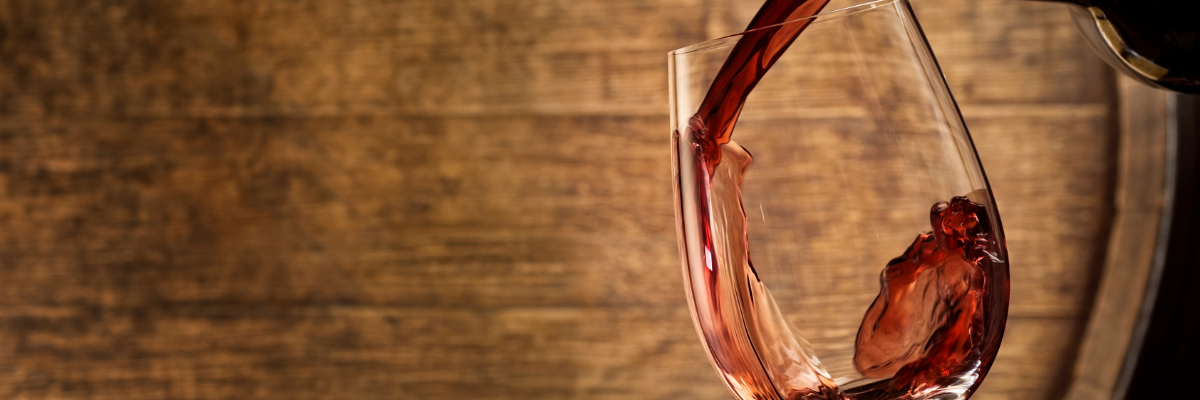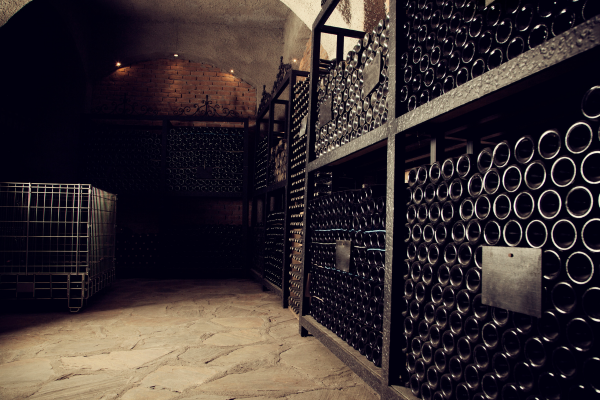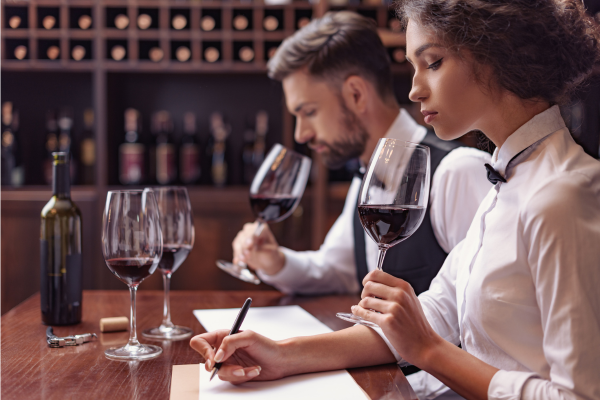How Long Will Your Wine Last?

Not all wines are built to last.
By Erin Henderson
When my sister had her kids, we purchased wines for their birth years. One has a Heitz Cellar Cabernet Sauvignon from Napa’s exciting 2005 vintage lying in wait. The other has an intriguing Guado al Tasso Bolgheri Superiore from 2010. That was a challenging vintage in Italy with loads of rain, but, in the right hands, wines of elegance and finesse could be found. Still, we might be pushing it with a long, two-decade wait before popping the cork.
My sister has the bottles cellared properly, of course, nestled comfortably in a temperature- and humidity-controlled wine fridge. She’s done her part; time will tell if the wines rise to the occasion.
Related: How to Successfully Store Wine at Home
You can take all the precautions to cellar wine: good producer, great vintage, careful cellaring conditions. But holding wines for the long term is still a roll of the dice.
That’s the thrill of the chase: when it comes to cellaring wine, sometimes you are rewarded handsomely for your patience, and sometimes your efforts will only be met with the crushing blow of a wine past its prime.

Not All Wines are Meant to Age
When The Wine Sisters began, among our services was cellar management (we don’t offer that anymore.) We worked in some very well-heeled cellars, a few bigger than my entire condo, and no matter if the collection had 100 bottles or 10-thousand bottles, on average, 10% were over the hill.
Wine is a living, breathing thing. And just like all living, breathing things, it has an expiration date. It might be one year for some; it might be 100 years for others.
Adding to the fascination and frustration of collecting wines, is that bottles you think are done can be remarkably compelling, and others that you are sure have plenty of gas left in the tank, are tired and dull.
Generally speaking, wine starts life exuberant and snappy, full of up-front fruit. As time marches on those fresh notes fade, and tertiary, or secondary, aromas and flavours creep in. Roasted nuts, leather, cooked mushroom, and dried fruit are common descriptors in older wine. Somewhere along the line there’s a delicious balance between new and old, creating complexity, harmony, and depth. The trick is to catch it at the right point of that bell curve.
The Good News
Wines at their pinnacle usually hover there for a number of years. That’s why you might read somewhat confounding reviews that give a wide breadth of the best drinking window – some as long as 15 years or more. Of course, wines at the start of this gap will skew fresher, wines at the end of this period will have more tertiary notes. You, as the wine drinker, get to pick the style that is best for your palate.
Tricks of the Trade
If you’re a serious collector with a nifty cellar, or planning on starting one, you may want to invest in a Coravin – a needle-like instrument that allows you to pull out some wine through the cork without actually opening the bottle.
Or, for the real wine nerds out there, do as the wine pros. Buy a few bottles. When the time is right, open one. If it tastes good to you, decide if there’s a benefit to aging it longer. If the answer is yes, set a reminder in your calendar (I told you we’re getting nerdy), and the following year open another bottle. Compare notes from the first. Is it declining? Staying the same? Improving? Now you have a bit of data to decide if you should hurry up and drink the remaining bottles or wait it out a little longer.

Good Time or Long Time? How to Know Which Bottles Will Last
Look, not every wine is made for cellaring. And that’s just fine. I’m happy to sip on a crisp and fresh rosé or bright and juicy Pinot Grigio when the time is right.
But when you do want to invest in bottles to cellar there are some good guidelines on knowing which will go the distance.
The Price is Right
If you want a wine to last a few years or decades, you will have to pony up some cash.
(This isn’t exclusive of course. I once had a spectacular 20-year-old Chilean Cab that is currently stocked for less than $20. So these unicorns do exist, but they’re few and far between.)
I suggest for spending $35 – $75 for wines you plan to age about a decade.
For wines you plan to open in 20 or more years, the $100+ bottle should last if properly cellared.
Big Love
Wines with lots of alcohol, tannin, acidity, and sugar last longer.
Think about your family heirloom fruit cake. The one no one eats but has existed through the five generations since arriving on the Mayflower. Now your mum is tasked with spooning a ladle-full of brandy over it every Christmas to keep it going. It’s the intense booze and diabetic coma-inducing amount of sugar that’s keeping that fruit cake going.
Wine is the same, but thankfully, much, much different.
- Wines that have more alcohol like Napa Cabernet Sauvignon, Super Tuscans, Barolo, and Port have the ability to last.
- Wines with powerful tannin such as Shiraz, Brunello, Tempranillo, and Bordeaux age well.
- Wines with bright acid such as Champagne, Riesling, Pinot Noir, and Chianti Classico can all last years and often decades.
- And finally, wines with sugar – dessert wines like Icewine or Sauternes, Marsala or Madeira, for example, are nearly indestructible.
Proven Pedigree
The reason the storied wines of Bordeaux, Tuscany, Burgundy, or Napa can command the prohibitive prices they do, is, in part, because of their ability to age gracefully (there are many other reasons, as well, but the finesse with which these bottles last long term contributes to the mystique.)
Wine regions that have a proven track record for producing wines that can cellar are the obvious choices for your collection.
Wines That Won’t Age
Again, there are exceptions to every rule, but this list is a guideline for understanding the bottles to drink now.
- Clear glass bottles. Dark bottles stop UV and light exposure which is harmful to wine. If your wine is bottled in clear glass, it’s meant to be consumed right away.
- Under $25. Again, as stated above, there are exceptions, but generally speaking, inexpensive wines are here for immediate joy, not languishing contemplation.
- Wines aged in stainless steel. Think Sauvignon Blanc, rosé, Prosecco, Pinot Grigio, Muscadet etc. These bright, fresh wines are made for immediate enjoyment. (Quality) Riesling is the exception to this rule.
- Boxed wine. One of the perks of bag-in-a-box wine is that it can last for several months thanks to the ingenious design of a bladder that deflates as wine is poured out, therefore reducing harmful oxygen exposure. But several months – not years – is the maximum.
- Wines from broad regions or appellations. If a wine label shows the place as simply, “Bordeaux,” or “California,” grapes can be sourced from anywhere within that place. And chances are, the grapes used to make that wine are grown for the quantity required to fill the demand of millions of bottles. You will notice wines worth cellaring get as granular as listing a specific vineyard.
Your next read: What is Vintage Wine, Anyway?
